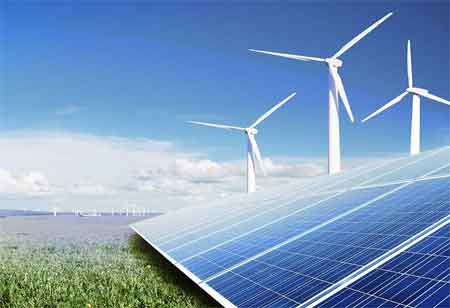Thank you for Subscribing to Agri Business Review Weekly Brief
Why are Agriculture Enterprises Embracing UAVs For Better Farming?

By
Agri Business Review | Tuesday, February 01, 2022
Stay ahead of the industry with exclusive feature stories on the top companies, expert insights and the latest news delivered straight to your inbox. Subscribe today.
By implementing agricultural drone technology, farmers get a better yield.
FREMONT, CA: Many enterprises leverage drones for aerial surveillance or just for entertainment use, while the agricultural platform is gradually recognizing the monumental impact that uncrewed aerial vehicles (UAVs) could have on land management. Drones are becoming one of the next-gen farming tools. Adrift is known as smart farming, a holistic, software-centric move towards a growing tradition. As the population grows day by day, food production must also increase by 70 percent to adequately supply everyone. This is where the drone comes into the picture. Drones open the door to manage crops and help farmers expand production without affecting the quality of the product.
Planting
The current implementation of UAV technology has minimized the seeding costs greatly. With the help of 3D mapping technology, drones improve field arrangement and create seed planting patterns. They help plant seeds and place the source down in the ground at the proper depth for adequate growth. After the planting is done, the drone-driven soil examination offers irrigation data and nitrogen-level supervision.
Pollination
The autonomous pollination and imaging system (APIS) is made to help the self-pollinating crops. The drones help locate the flowers by using a camera and discharges a push of air, making the flower branch vibrate. Then, it takes a picture of the flowers to view the pollination. The main agenda of these APIS is not to replace the pollinators but to innovate a technology that would help them if needed.
AI
controlled drones of today will soon be replaced with fully autonomous drones that can complete agricultural monitoring tasks mutually and collect data on their own. One of the emerging technologies in the field of the farming industry is predictive analysis. By implementing drones, change to track and predict multiple environmental impacts on the crop yields like the weather changes. Drone technology continuously improves and transforms the way farmers plan for future production and pinpoint the best areas to plant the next set of seeds. AI is the automation component of drones. It helps with programming a set of parameters for the drones and supervising it when it carries out those parameters.
Thermal Cameras
A thermal imaging camera on a drone can be a powerful tool. This helps detect heat emerging from almost all the objects or materials and transform them into visual images or videos. In addition, the camera can adjust to identify the difference between the hot or cold ground and have the ability to reach wide extended areas that are hard to get to or see with a naked eye. For example, a thermal measurement can swiftly show where locations within a field are under or even over-irrigated. At the same time, the traditional way of determining drainage was to probe and dig, which was time-consuming. Now, the farmers can detect these tiny homes utilizing drone technology.
Check This Out: Top Agtech Startups
NIR Sensors
Near-Infrared (NIR) sensors measure the critical elements in the manufacturing process. An optical mechanism is used to generate accurate and vigorous measurements. The geometric techniques are used to know the area of concern that needs a given size. These include ambient lighting, relative humidity, product height fluctuations, seasonal differences, and color variations. NIR sensors enhance quality assurance too. Within agriculture, NIR sensors are centered on electromagnetic radiation contact with soil or plant material. The imaging camera sensors on agricultural drones enable them to manage crops, soil, fertilizing, and irrigation more accurately. Remote sensing involves measuring the radiation reflected in farm fields rather than being absorbed. Plant reflectance is more significant in the NIR section due to leaf density and canopy structure effects.
Fighting the crop Diseases
Farmers use drones to measure their agriculture by leveraging the data for the mapping and spraying their crops to get the correct profit. It is estimated that nearly 30-40 percent of the produce from cultivated plants dies due to several harmful pests and diseases. To minimize this, the farmers started using drones for their work. Farmers can compare the data from the UAV pictures and their ground monitoring to know the performance of the drones and the crops.





